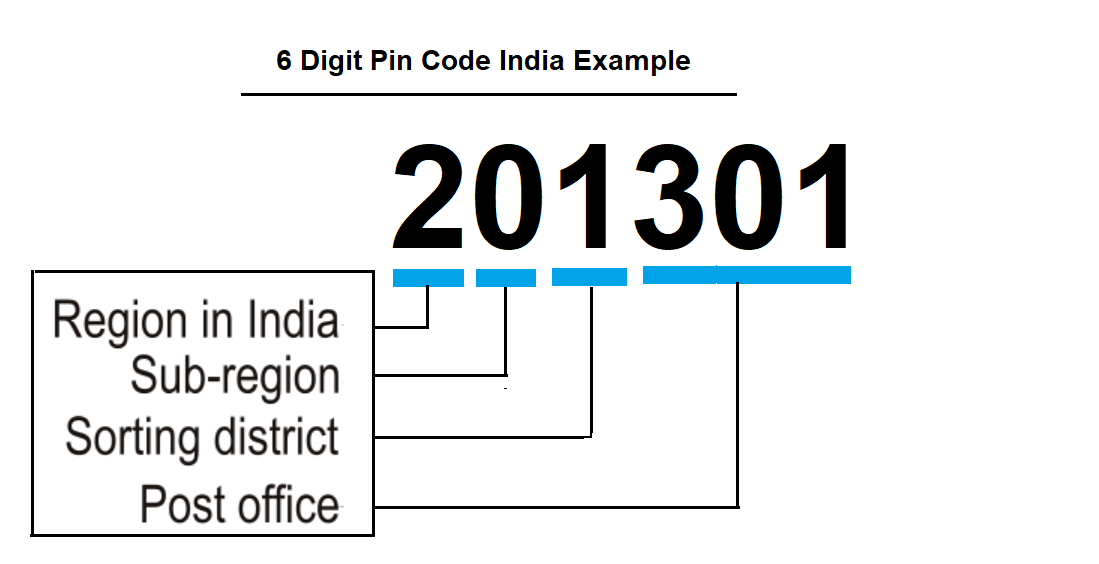What is Pincode?
Pincode or Zip code is an unique Post office number system used to sort and deliver post in correct address. Each Pincode is mapped to area. This is a 6-digit code that is used to identify the specific geographic location and area in India. The first digit of the PIN code represents the region, the second digit represents the sub-region, the third digit represents the sorting district within the region, and the last three digits represent the delivery post office.
It is a six-digit unique identification code used to identify the post office across the India. For some country it is called as Zip code. It helps to sort and deliver post mails and parcel.
First digit indicates the region and second digit represent sub region.
1 - Delhi, Haryana, Punjab, Himachal Pradesh, Jammu and Kashmir, and Chandigarh
2 - Uttar Pradesh and Uttarakhand
3 - Rajasthan and Gujarat
4 - Maharashtra, Goa, and Dadra and Nagar Haveli
5 - Madhya Pradesh and Chhattisgarh
6 - West Bengal, Odisha, and Jharkhand
7 - Assam, Meghalaya, Arunachal Pradesh, Nagaland, Manipur, Mizoram, and Tripura
8 - Bihar and Jharkhand
9 - Andhra Pradesh and Telangana, Karnataka, and Tamil Nadu, Kerala, and Puducherry
The second digit represents the sub-region. The third digit represents the district within the sub-region. The last three digits represent the specific post office or delivery area.

First 2 digit postal code of Pin Code.
|